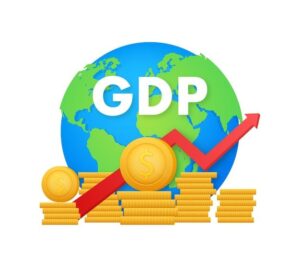Global Development Finance Gap: UN’s $4 Trillion Challenge
The world is at a critical crossroads. Every year, there’s a staggering $4 trillion shortfall in funding needed to achieve the UN Sustainable Development Goals (SDGs) by 2030. This isn’t just about numbers—it’s about real lives, real development, and the future of our planet.
🌍 What is the Global Development Finance Gap?
The global development finance gap refers to the massive difference between:
- 💰 Required annual investment for SDGs: Around $5.9 trillion
- 💸 Actual investment available: Roughly $1.9 trillion
- 🚨 Resulting shortfall: $4 trillion every year
This funding gap affects access to education, healthcare, climate resilience, gender equality, and basic infrastructure across low and middle-income countries.
🌐 UN’s “Global Promise” at Seville Summit 2025
In July 2025, more than 50 world leaders gathered at the UN Financing for Development Summit in Seville, Spain. There, they launched the Seville Commitment — a global framework to mobilize resources and close the development funding gap.

Key Highlights from the Seville Commitment:
- 📈 Pledge to raise domestic tax revenues to at least 15% of GDP
- 🏦 Tripling the lending capacity of multilateral development banks (MDBs)
- 💼 Emphasis on blended finance to de-risk private investment
- ✈️ Proposal for global taxes like premium air travel levies
- 📊 Transparency and governance reforms to curb illicit financial flows
🤔 Why Is This Gap a Global Concern?
This is not just an issue for international institutions or governments. The development finance gap directly affects:
- 🚰 Access to clean drinking water and sanitation
- 🏥 Quality healthcare and pandemic response systems
- 🏫 Universal education and digital access
- 🌱 Climate resilience and environmental sustainability
Without adequate finance, the promise of a “Viksit Bharat by 2047” and other national ambitions are at serious risk. Read more on our related article: Viksit Bharat 2047 GDP Goal.
🚧 What’s Blocking the Flow of Development Finance?
1. Trust Deficit & Weak Governance
Corruption, opaque financial systems, and illicit flows reduce investor confidence and hinder domestic resource mobilization.
2. Insufficient Private Sector Engagement
Blended finance is still underutilized. Many investors find emerging markets too risky without proper risk-sharing frameworks.
3. Political Fragmentation
The absence of the U.S. at the Seville Summit has raised questions about global unity in tackling this issue. A divided approach leads to diluted outcomes.
✅ Possible Solutions: Can We Close the Gap?
While the $4 trillion number sounds overwhelming, several strategies can make a real difference:
- 🔁 Public-private partnerships with shared accountability
- 📊 Stronger data transparency and tax reforms
- 💡 Innovation in financial instruments like sustainability-linked bonds
- 🌱 Localizing finance to empower community-driven development
📢 The Bottom Line
The global development finance gap is not just a number—it’s a call to action. The Seville Commitment is a step in the right direction, but it must be backed by real political will, global coordination, and private sector innovation.
💬 Join the Conversation
Do you think the UN’s new pledge will succeed in closing the gap? What role should your country play? We’d love to hear your thoughts.
👉 Leave a comment below or explore more articles on SVLinker for expert insights on global finance and policy.

